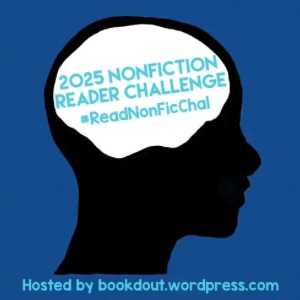The 2025 Nonfiction Reader Challenge Completed

This year, for the 5th time, I took on the Nonfiction Reader Challenge, hosted by Shelleyrae at Book’d Out ( https://bookdout.wordpress.com/ ). I’ve read 10 books in 8 of the categories of this year’s Challenge, which I guess makes me a “Nonfiction Nibbler” (with a few more bites). My Challenge wrap-up is: Memoir/Biography Madly, Deeply Health The Remarkable Life of the Skin True Crime The Peep Show: The Murders at 10 Rillington Place Islands The Island at the Center of the World Science Neanderthal Man The World Before Us Myth, Legend and Folklore Robin Hood: A Complete Study of the English Outlaw Robin Hood: Legend and Reality Travel The Ship of Dreams Garden Good Nature I savored all the books I read (what a wonderful reading year!), and enjoyed the variety of categories. So I can’t say which is my favorite. Now I’ve already started my TBR pile for the 2026 Challenge.









